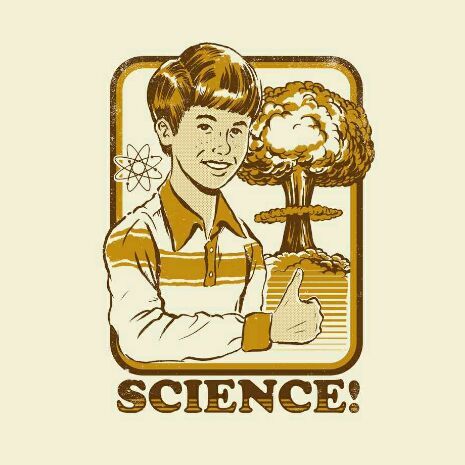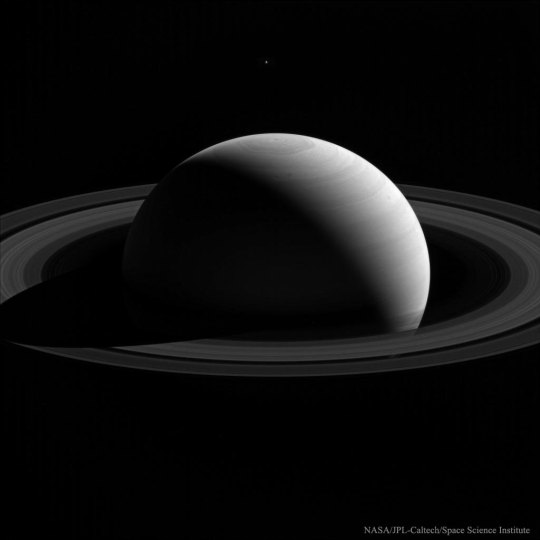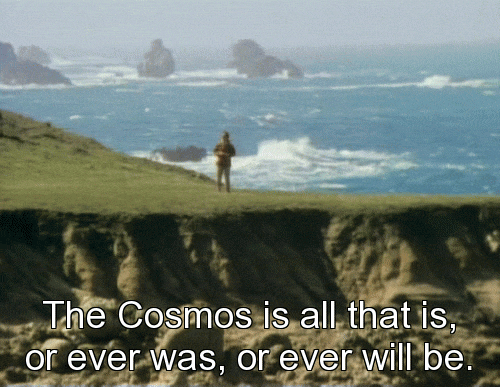Video
youtube
If you managed to get close enough to a black hole to fall into it, the extreme gravitational tidal forces would end up deforming and destroying you like spaghetti. Assuming that you are not so crazy as to dive headfirst into the black hole, your feet would suffer a much greater acceleration than your head; a difference that would be accentuated as you get closer until your body can no longer stand it. And that’s a pretty brutal fate, isn’t it?
Such a heavy physical phenomenon deserves an anthem to match: Black Hole Spaghettification is my new deathcore song dedicated to this extreme and lethal way of ending a space trip
42 notes
·
View notes
Video
youtube
Гопник kicking your ass with powerful hardbass.
I'm a physicist and from time to time I make songs with scientific concepts. My new song is about Cherenkov radiation, so it could only be Russian hardbass.
15 notes
·
View notes
Video
youtube
If you managed to get close enough to a black hole to fall into it, the extreme gravitational tidal forces would end up deforming and destroying you like spaghetti. Assuming that you are not so crazy as to dive headfirst into the black hole, your feet would suffer a much greater acceleration than your head; a difference that would be accentuated as you get closer until your body can no longer stand it. And that's a pretty brutal fate, isn't it?
Such a heavy physical phenomenon deserves an anthem to match: Black Hole Spaghettification is my new deathcore song dedicated to this extreme and lethal way of ending a space trip
#science#blackhole#black hole#astrophysics#physicist#quantumphysics#physics#science communication#music science#deathcore
42 notes
·
View notes
Video
youtube
Quantum Physics Fucked my Brain
11 notes
·
View notes
Photo
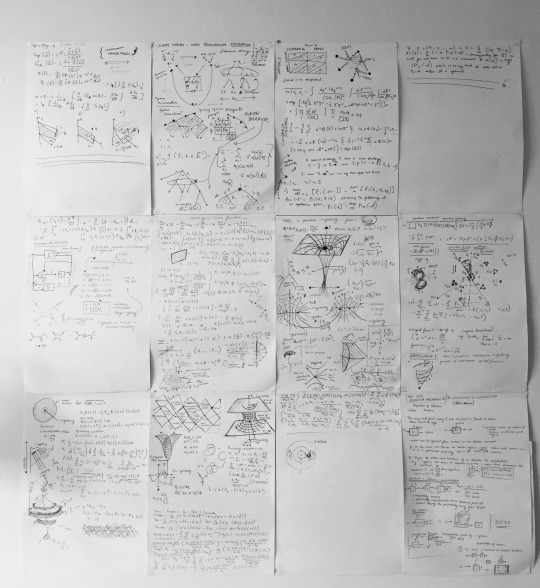
What I like to call my “innovation wall.” These are mostly original/rough ideas and proofs for theorems etc I’ve dreamt up at 3am or some other ungodly hour.
1K notes
·
View notes
Photo
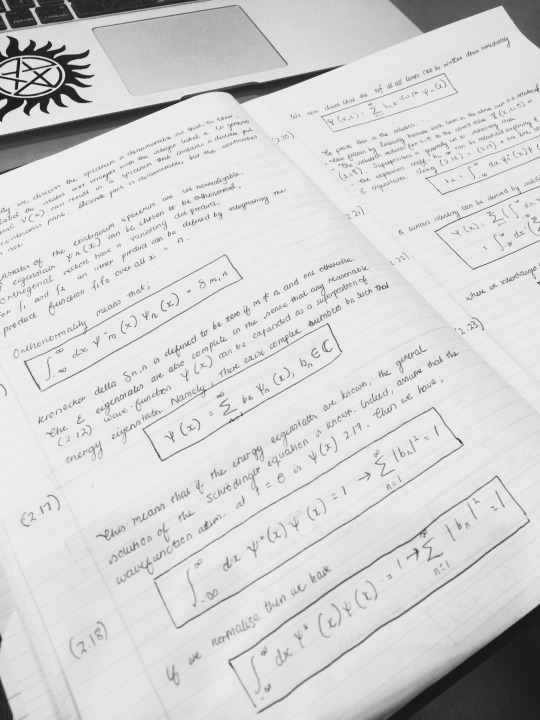
Working on advanced quantum physics. Terribly cold today, but attempting to stay off caffeine so I sleep better… So drinking herbal tea. I feel like a health God. Well, I will,at least until lunch time.
1K notes
·
View notes
Photo
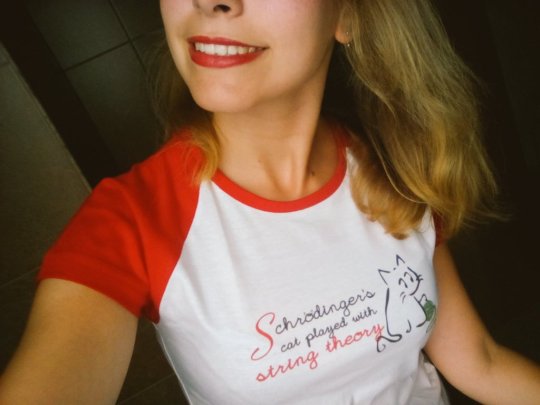
Schrödinger’s cat played with string theory!
You can buy it at:
http://www.latostadora.com/nerdsneedlovetoo/schrdingers_cat_played_with_string_theory/881561
#Schrödinger#science#scientist#sexy science#schrodingers cat#hello schrodinger#physics#quantum physics#quantum#física
23 notes
·
View notes
Photo

Women in Science: 50 Fearless Pioneers Who Changed the World
Rachel Ignotofsky
An illustrated celebration of trailblazing women in science – Ada Lovelace, Marie Curie, Jane Goodall, Mae Jemison, and more pioneers who conquered curiosity against tremendous cultural odds:
1K notes
·
View notes
Video
youtube
I just discovered these trippy video edits on this channel called Aliantos. Give it a watch!

77 notes
·
View notes
Photo
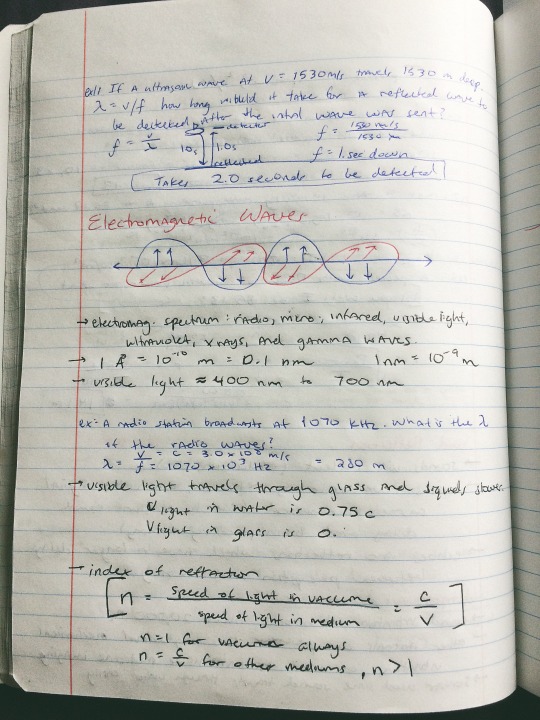

Some notes on different lectures from my physics class.
83 notes
·
View notes
Quote
The universe seems neither benign nor hostile, merely indifferent.
Carl Sagan
(via quote-bucket)
358 notes
·
View notes
Note
If you could give the planets stereotypical highschool traits (jock, nerd, popular, ect) which planets would be what?
Mercury: runs really, really quickly (around the sun) but is really hotheaded and is often on the edge of getting kicked off of the track team
Venus: used to be really pretty but she let stress get to her head. now, being around her just has such an undesirable atmosphere
Earth: the really pretty, smart, nice girl that everyone loves because there’s literally nothing not to like about her. she’ll probably go to MIT
Mars: obsessed with robots
Jupiter: the buff, giant, popular football player
Saturn: the football players cheerleader girlfriend that happens to be the most beautiful girl in the world (Jupiter doesn’t deserve her)
Uranus: the class clown that throws stuff at people from the back of class
Neptune: the nerdy person that spend their break times at school studying and sits in the back of class to avoid everyone else
Pluto: the kid that ditches school everyday and was never able to graduate into being a planet back in solar system formation school
2K notes
·
View notes
Note
WHAT HAPPENS IF YOU COMBINE MATTER AND ANTI-MATTER? DO U CREATE A WORM HOLE AND TRAVEL AT THE SPEED OF LIGHT PR DOES IT BLOW UP AND KILL EVERYTHING IN IT'S PATH
it just annihilates (goes boom) as far as we know
85 notes
·
View notes
Text
Largest Collection of Planets EVER Discovered!
Guess what!? Our Kepler mission has verified 1,284 new planets, which is the single largest finding of planets to date. This gives us hope that somewhere out there, around a star much like ours, we can possibly one day discover another Earth-like planet.
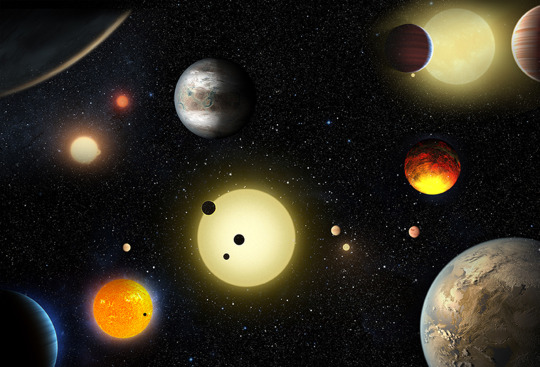
But what exactly does that mean? These planets were previously seen by our spacecraft, but have now been verified. Kepler’s candidates require verification to determine if they are actual planets, and not another object, such as a small star, mimicking a planet. This announcement more than doubles the number of verified planets from Kepler.

Since the discovery of the first planets outside our solar system more than two decades ago, researchers have resorted to a laborious, one-by-one process of verifying suspected planets. These follow-up observations are often time and resource intensive. This latest announcement, however, is based on a statistical analysis method that can be applied to many planet candidates simultaneously.
They employed a technique to assign each Kepler candidate a planet-hood probability percentage – the first such automated computation on this scale, as previous statistical techniques focused only on sub-groups within the greater list of planet candidates identified by Kepler.
What that means in English: Planet candidates can be thought of like bread crumbs. If you drop a few large crumbs on the floor, you can pick them up one by one. But, if you spill a whole bag of tiny crumbs, you’re going to need a broom. This statistical analysis is our broom.

The Basics: Our Kepler space telescope measures the brightness of stars. The data will look like an EKG showing the heart beat. Whenever a planet passes in front of its parent star a viewed from the spacecraft, a tiny pulse or beat is produced. From the repeated beats, we can detect and verify the existence of Earth-size planets and learn about their orbits and sizes. This planet-hunting technique is also known as the Transit Method.
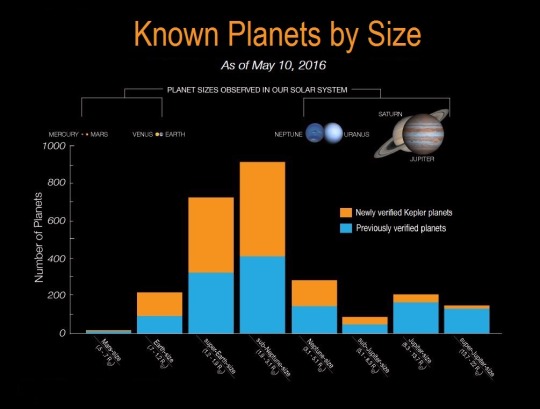
The number of planets by size for all known exoplanets, planets that orbit a sun-like star, can be seen in the above graph. The blue bars represent all previously verified exoplanets by size, while the orange bars represent Kepler’s 1,284 newly validated planets announced on May 10.
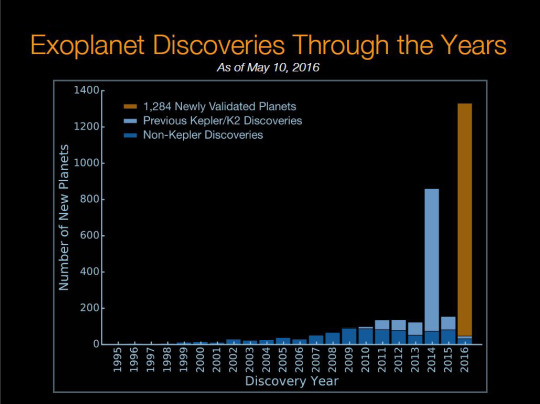
While our original Kepler mission has concluded, we have more than 4 years of science collected that produced a remarkable data set that will be used by scientists for decades. The spacecraft itself has been re-purposed for a new mission, called K2 – an extended version of the original Kepler mission to new parts of the sky and new fields of study.
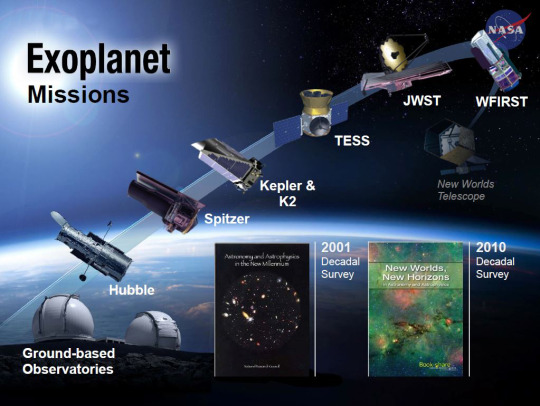
The above visual shows all the missions we’re currently using, and plan to use, in order to continue searching for signs of life beyond Earth.
Following Kepler, we will be launching future missions to continue planet-hunting , such as the Transiting Exoplanet Survey Satellite (TESS), and the James Webb Space Telescope. We hope to continue searching for other worlds out there and maybe even signs of life-as-we-know-it beyond Earth.
Make sure to follow us on Tumblr for your regular dose of space: http://nasa.tumblr.com
3K notes
·
View notes
